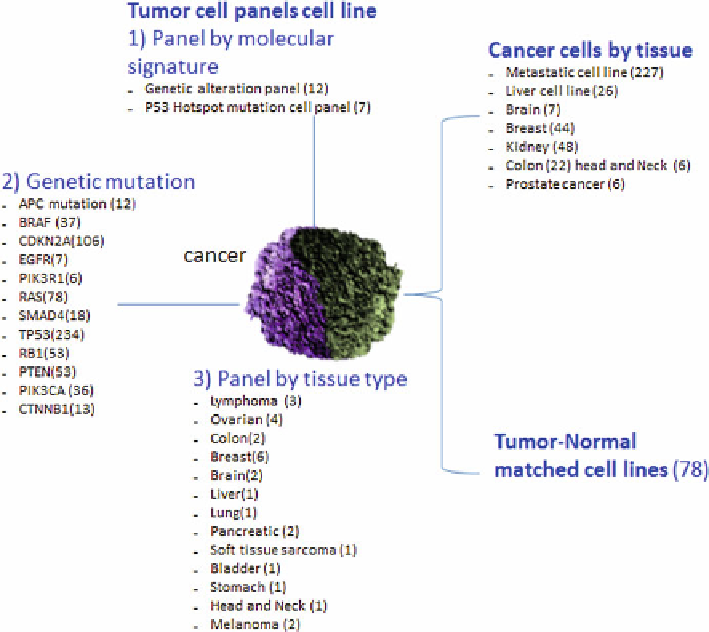Environmental Engineering Reference
In-Depth Information
Fig. 6.3 Different cell lines (and numbers of other cell line available) employed in cellular assay
related to cancer. The number indicated in the bracket is the number of subtype (available) cell
line. The data collection is from ATCC
Cell models can be selected from dermal, oral-gastric, colonic, pulmonary,
nasal, kidney and vaginal epithelial depending upon the need and the desired
endpoint. Other common transformed epithelial lines include MDCK (kidney),
HT-1080, HT29-18-C1 (colonic), and HeLa (cervical). Other relevant cell types
include endothelial cells (BAECs and HUVECs) and red blood cells (erythrocytes),
platelets, and leukocytes in cultures. Secondary transformed endothelial-derived
cell lines include COS-7 (kidney) and MS-1 (pancreas). Human aortic endothelial
cells (HAECs), human umbilical vascular endothelial cells (HUVECs), and human
microvascular endothelial cells can be used as models of endothelial inflammatory
response and resultant arthrosclerosis. Beside from common precancerous cells,
numerous oncogene-transformed cancerous cell lines (MSTO211H, HL60,WTK1,
1321N1, and HeLa) are employed in vitro for materials testing, pulmonary cells are
represented by immortalized secondary cell lines phenotype, e.g. THP-1, RAW, J7,

